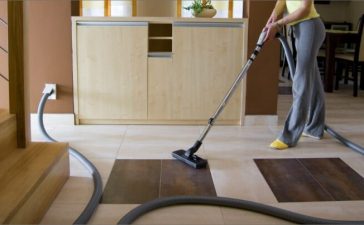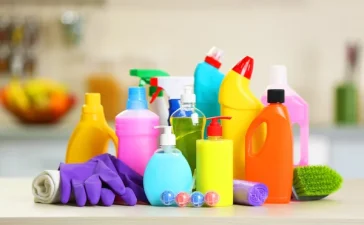In today’s fast-paced world, maintaining a clean and functional home or workspace has become more essential than ever. However, the methods by which we approach cleaning and maintenance are evolving. As concerns about environmental impact grow, many individuals and organizations are finding themselves torn between two primary approaches: traditional maintenance, which often relies on chemical-laden products and regular upkeep, and eco-friendly alternatives, which prioritize sustainability and environmental health.
Each method comes with its own set of benefits and challenges. Understanding the differences between them, and their respective advantages, can help you make informed choices about how to maintain cleanliness and functionality in a way that aligns with your values, lifestyle, and long-term goals. In this article, we will explore the merits and drawbacks of maintenance-focused and eco-friendly approaches to cleaning and upkeep, ultimately helping you decide which method works best for you.
The Case for Maintenance-Focused Cleaning and Upkeep
When people think of maintenance, they often envision the constant need for upkeep, repair, and cleaning to ensure that everything in a space operates at peak functionality. This approach relies heavily on the use of specialized cleaning products and regular maintenance routines to keep things running smoothly.
Benefits of Maintenance-Focused Cleaning
-
Reliability and Effectiveness
Maintenance-oriented cleaning often involves using tried-and-true products that are formulated for specific tasks, such as removing grease, stains, or germs. These products are often highly effective, offering immediate and visible results. For example, an industrial-strength cleaner can remove years of grime from kitchen appliances or deep-clean carpets with ease. Maintenance-focused cleaning allows for precision in tackling stubborn stains, odors, and bacteria, which is crucial in spaces like kitchens, bathrooms, and hospitals. -
Convenience and Speed
For individuals with busy schedules or those who need quick results, maintenance cleaning offers convenience. Commercial cleaning products are readily available, easy to use, and can produce instant gratification. A quick spritz of an all-purpose cleaner can freshen up countertops, while a few wipes of a disinfectant can sanitize a bathroom in moments. The simplicity and speed of maintenance-focused cleaning ensure that even the most hectic environments can be kept in check with minimal effort. -
Preventing Long-Term Damage
Routine maintenance is crucial for preventing costly repairs or replacements in the future. Regularly cleaning HVAC systems, for instance, ensures they function properly, preventing breakdowns or energy inefficiencies. Similarly, maintaining appliances and furniture with the right products can extend their lifespan, making maintenance-focused cleaning a long-term investment.
Drawbacks of Maintenance-Focused Cleaning
-
Chemical Use and Health Risks
One of the primary criticisms of maintenance cleaning is the reliance on harsh chemicals. Many traditional cleaning products are filled with toxic substances, such as ammonia, chlorine bleach, and phthalates, which can be harmful to human health when inhaled or absorbed through the skin. Long-term exposure to these chemicals may lead to respiratory issues, skin irritations, and other health problems. Additionally, these products can be harmful to pets and children. -
Environmental Impact
The environmental consequences of chemical cleaning products cannot be overlooked. Many commercial cleaning agents contain non-biodegradable chemicals that can seep into water systems, harming wildlife and ecosystems. Single-use plastic packaging also contributes to pollution, and the carbon footprint of manufacturing and transporting these products adds to the environmental toll. -
Over-reliance on Products
Focusing solely on maintenance can sometimes create an over-reliance on products and procedures that mask underlying issues. For instance, frequent use of harsh chemical cleaners might temporarily resolve surface-level problems, but they do not address the root causes of issues, such as poor ventilation or structural wear. Maintenance cleaning can sometimes become a short-term fix rather than a long-term solution.
The Appeal of Eco-friendly Cleaning & Maintenance
In contrast to maintenance-focused cleaning, eco-friendly methods prioritize sustainability, natural ingredients, and low-impact techniques to achieve cleanliness and order. Eco-friendly cleaning solutions focus on reducing the environmental footprint by using biodegradable, non-toxic ingredients, while eco-friendly maintenance aims to address the root causes of wear and tear in a way that is gentle on the planet.
Benefits of Eco-friendly Cleaning
-
Healthier for People and Pets
Eco-friendly cleaning products typically use natural ingredients, such as vinegar, baking soda, essential oils, and plant-based surfactants, which are much safer for human health compared to their chemical counterparts. These products do not release harmful fumes or irritate the skin, making them ideal for homes with children, pets, or individuals with allergies. By using eco-friendly alternatives, you are ensuring that the cleaning process is non-toxic and safe for everyone in your home. -
Sustainability and Environmental Protection
Eco-friendly products are biodegradable, meaning they break down naturally in the environment without causing harm to ecosystems. This reduces the risk of water and soil contamination. Additionally, many eco-friendly cleaning products are packaged in recyclable materials or come in refillable containers, which help reduce the massive amount of single-use plastic that fills landfills. Choosing eco-friendly products contributes to a larger movement toward sustainable living and helps lower your overall carbon footprint. -
Long-Term Cost Savings
While eco-friendly cleaning products may sometimes come with a higher initial cost, they can save money in the long run. Many eco-friendly solutions are multi-purpose, meaning you can use a single product for several cleaning tasks. Moreover, homemade solutions—such as a simple mixture of vinegar and water—can be highly effective at a fraction of the cost of commercial cleaners. Over time, as you replace costly chemical products with simple, natural ingredients, your expenses can decrease significantly.
Drawbacks of Eco-friendly Cleaning
-
Effectiveness for Heavy-Duty Tasks
While eco-friendly cleaners are often effective for general cleaning tasks, they may not always perform as well as their chemical counterparts when it comes to tackling tough jobs like heavy grease buildup or deeply ingrained stains. For example, while vinegar can clean windows and countertops effectively, it may not be as potent as ammonia-based cleaners when it comes to lifting heavy stains from fabrics or upholstery. For individuals who need to tackle challenging cleaning issues regularly, the performance of eco-friendly solutions may not meet expectations. -
Time-Intensive Preparation
Creating homemade cleaning solutions, such as a mixture of baking soda and vinegar or essential oils and water, requires time and effort. While some people enjoy the process of crafting their own cleaning products, it may not be practical for those who need fast, on-the-go solutions. Additionally, eco-friendly maintenance might require more frequent attention, as some natural remedies, like plant-based oils, may not provide the same long-term results as industrial-grade products. -
Limited Availability and Awareness
Not all eco-friendly cleaning products are easily accessible, and some may be difficult to find in local stores. Furthermore, consumers might struggle to navigate the market of green cleaning products, as some companies claim to be eco-friendly while still using questionable ingredients. It is important for buyers to do their research to ensure they are purchasing truly sustainable and safe products.
Maintenance vs. Eco-friendly: What Works Best?
The debate between maintenance-focused cleaning and eco-friendly cleaning is not a simple one. Both methods offer distinct advantages, and the best choice depends largely on individual preferences, the specific needs of a given space, and environmental values.
For those who prioritize reliability, speed, and heavy-duty performance, traditional maintenance cleaning may be the ideal approach. It provides quick solutions to immediate cleaning problems and helps maintain the functionality of appliances and surfaces. However, it often comes at a cost to both personal health and the environment.
On the other hand, eco-friendly cleaning offers a healthier, more sustainable alternative, with the potential for long-term savings and minimal environmental impact. While eco-friendly products may not always meet the performance standards of industrial cleaners, they are a safer choice for the home and the planet. Furthermore, by focusing on maintenance that prevents damage before it occurs, the eco-friendly approach promotes a more holistic view of cleaning, addressing the root causes of wear and tear rather than simply masking problems.
Ultimately, a balanced approach may be the most effective solution. By combining eco-friendly cleaning products for routine maintenance with targeted, occasional use of stronger products for heavy-duty tasks, you can achieve both cleanliness and sustainability in your space. Prioritizing green solutions for everyday upkeep, while using chemical products only when absolutely necessary, allows you to maintain a healthy and well-maintained home, without compromising on your environmental responsibilities.









